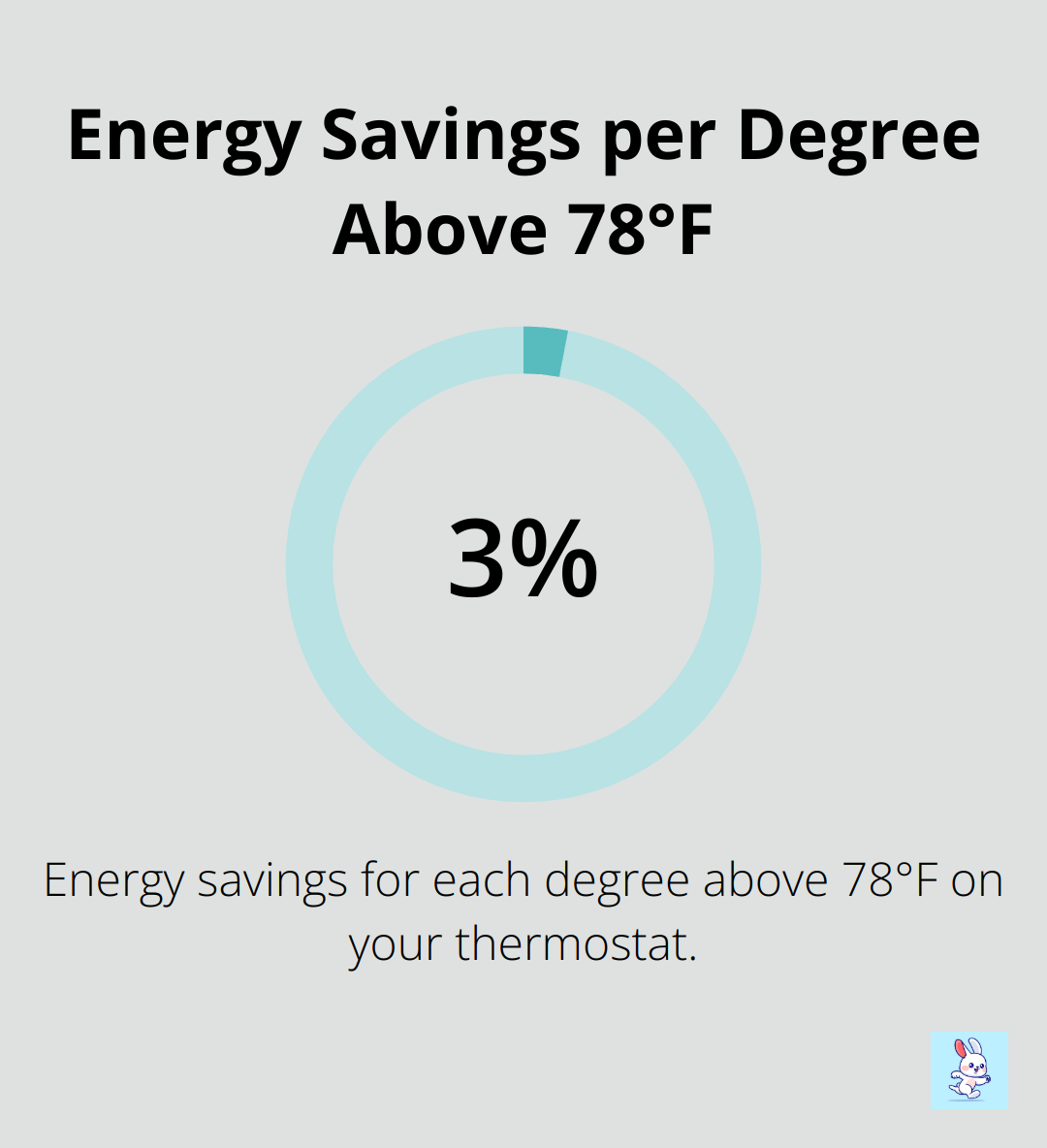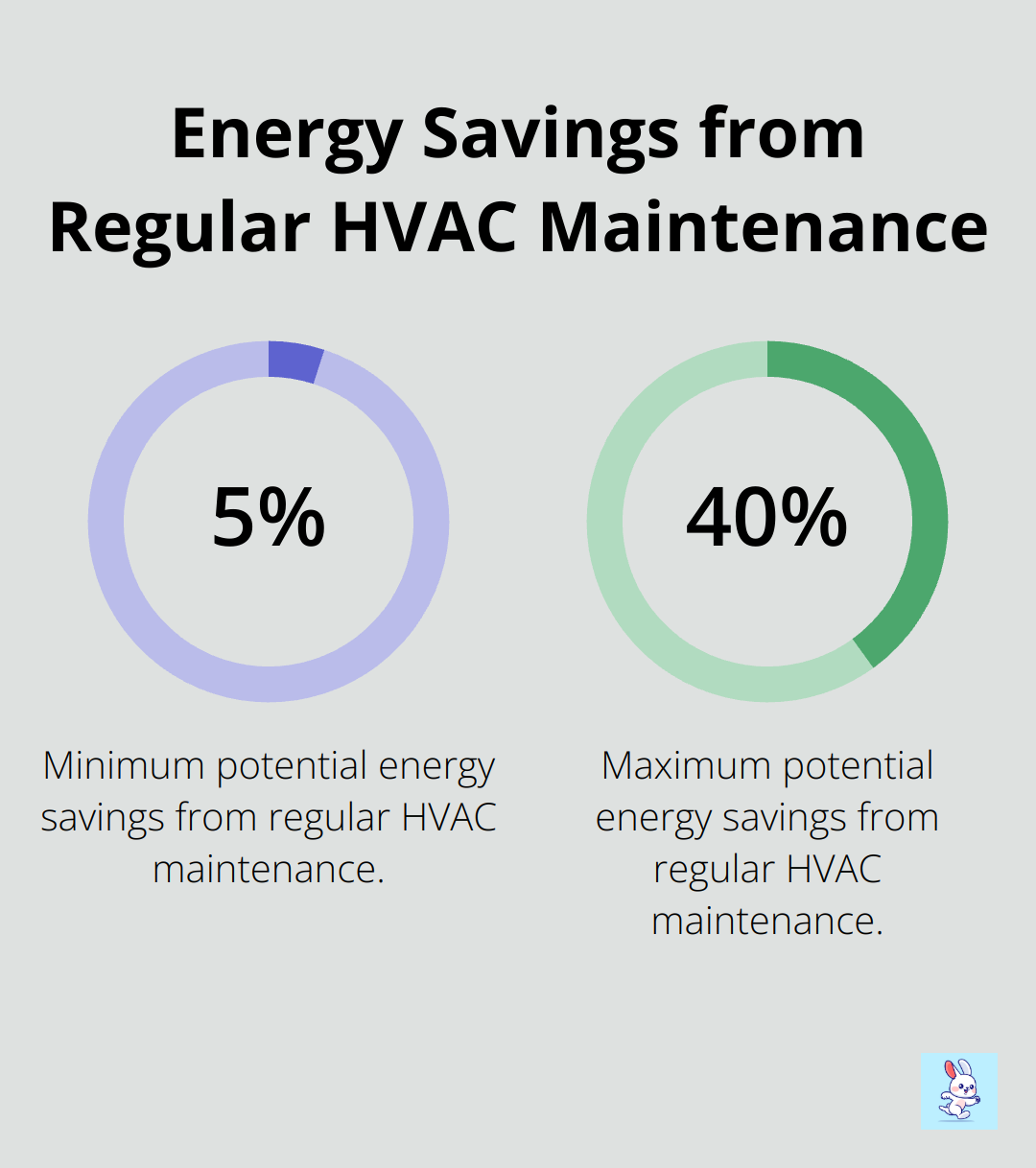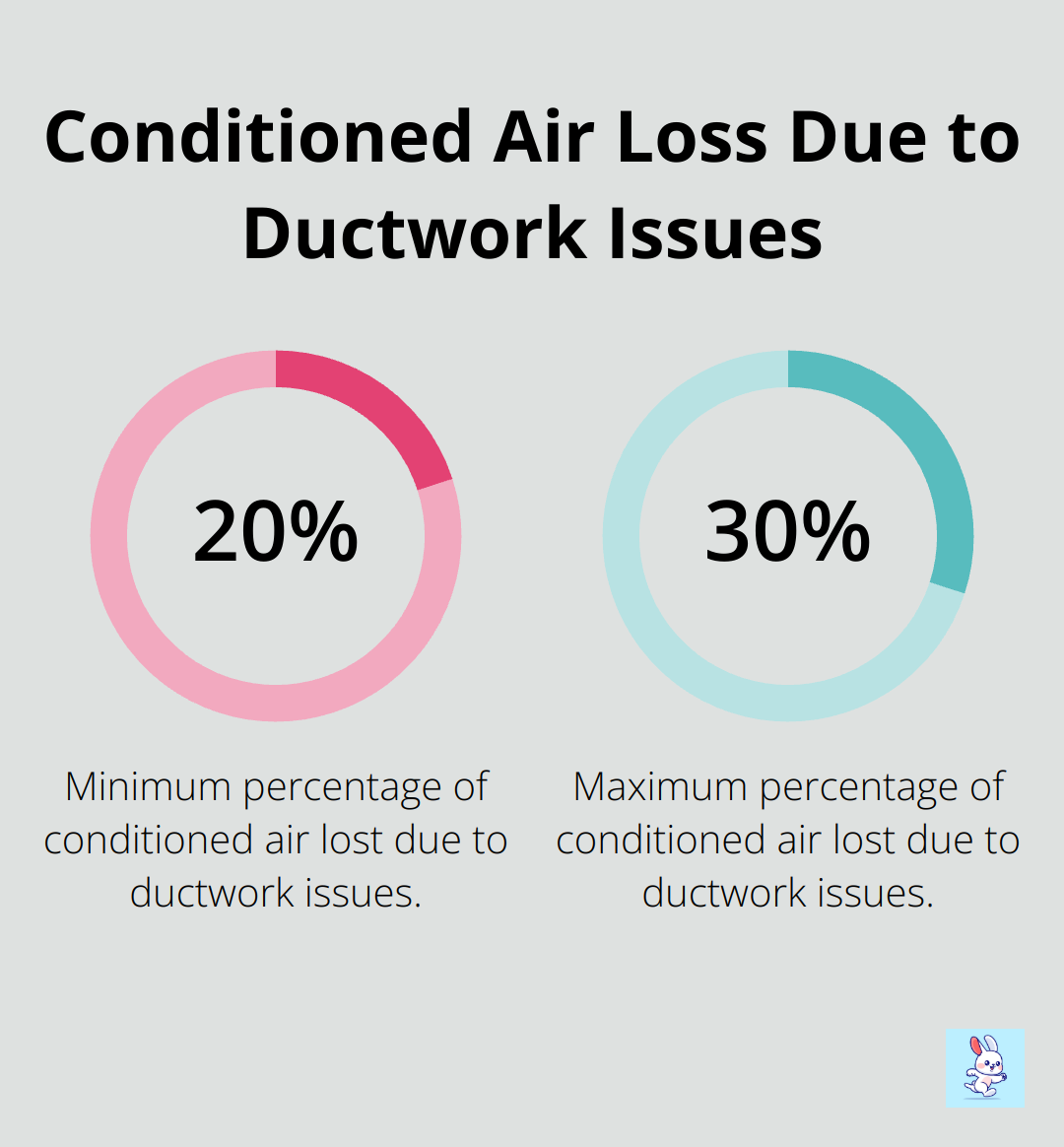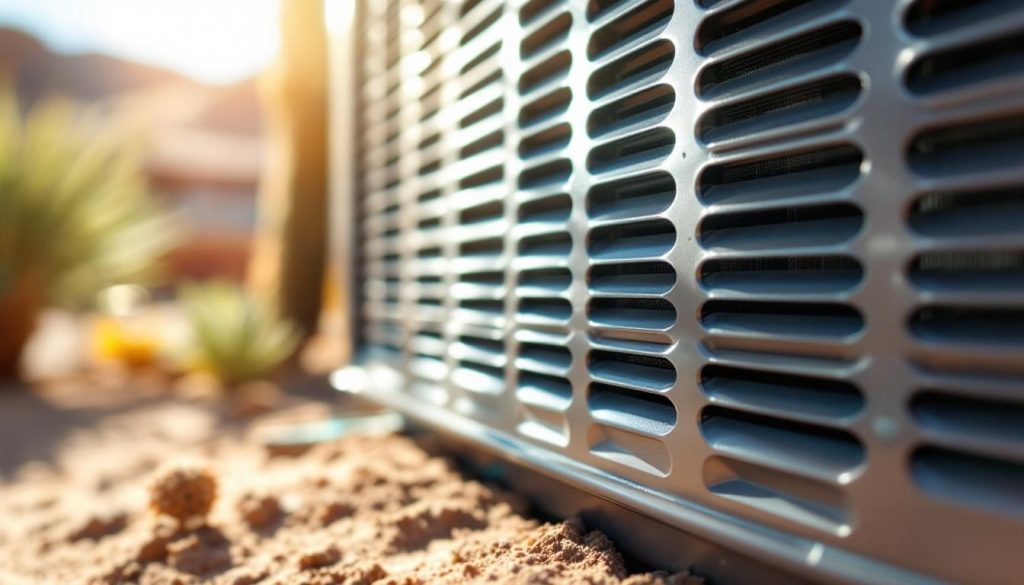Living in the desert presents unique challenges for HVAC systems. At Cleaning Rabbit, we understand the importance of maintaining your cooling equipment in harsh climates.
Regular HVAC maintenance is essential for desert dwellers, helping to combat extreme temperatures, dust accumulation, and low humidity. By following a proper HVAC maintenance schedule, you can improve energy efficiency, extend equipment lifespan, and enhance indoor comfort.
How Desert Climate Challenges HVAC Systems
Desert climates push HVAC systems to their limits, requiring specialized maintenance. The harsh conditions in Las Vegas and Henderson present unique obstacles for air conditioning units.
Extreme Heat: The Relentless Enemy
Keeping your home at 68°F (20°C) in winter and 72°F (22°C) in summer may feel comfortable but increases energy bills significantly. These temperatures force HVAC systems to operate continuously, increasing wear and tear on components.
To reduce strain on your system, set your thermostat a few degrees higher during peak heat hours. The U.S. Department of Energy states that every degree above 78°F (25.6°C) can save up to 3% on cooling costs.

Dust and Sand: Microscopic Invaders
Fine dust and sand particles plague desert environments. These tiny invaders clog filters and coat internal components of HVAC systems. The American Lung Association ranks Las Vegas among the top 25 most polluted cities for year-round particle pollution.
Protect your HVAC system by checking and replacing air filters monthly during peak dust seasons. A whole-house air purifier can capture up to 99% of airborne particles, significantly reducing the burden on your HVAC system.
Low Humidity: The Silent Efficiency Thief
Desert climates often have humidity levels below 30%, leading to dry air inside homes. This not only affects comfort but also impacts HVAC system efficiency. Dry air feels cooler, which might tempt you to lower your thermostat unnecessarily.
Install a whole-house humidifier to maintain optimal humidity levels between 30-50%. This can help you feel comfortable at higher temperatures, reducing HVAC system strain. The Environmental Protection Agency reports that this approach can potentially lower energy bills by up to 4%.
Understanding these challenges allows homeowners to take proactive steps in protecting their HVAC systems. The next section will explore how regular maintenance can combat these desert-specific issues and extend the life of your cooling equipment.
How Regular HVAC Maintenance Saves You Money and Improves Comfort
Regular HVAC maintenance is not just a recommendation; it’s a necessity for desert dwellers. The benefits extend far beyond simple comfort, impacting your wallet, your health, and the longevity of your cooling system.
Lower Energy Bills Through Improved Efficiency
A well-maintained HVAC system operates more efficiently, consuming less energy to cool your home. The U.S. Department of Energy has gathered and reviewed 44 reports, focusing primarily on field studies, produced by industry experts, utilities, and regional energy efficiency organizations. This research highlights the importance of proper HVAC maintenance and installation practices.
The Building Efficiency Initiative found that regular HVAC maintenance can lead to energy savings of 5-40%. In Las Vegas, where summer temperatures often soar above 100°F, these savings can be substantial. A homeowner with a monthly cooling bill of $200 could potentially save between $10 to $80 per month (a 5-40% reduction) simply by keeping their HVAC system in top shape.

Extend Your HVAC System’s Lifespan
The harsh desert climate takes a toll on HVAC equipment, but regular maintenance can significantly extend its lifespan. The Air Conditioning Contractors of America (ACCA) states that proper maintenance can extend the life of your HVAC system by 30% or more.
A typical HVAC system lasts about 15-20 years. With regular maintenance, you could potentially add 4-6 years to its life. Given that a new HVAC system can cost between $5,000 to $10,000, the financial benefits of extending your current system’s lifespan are clear.
Breathe Easier with Enhanced Indoor Air Quality
In desert regions like Las Vegas and Henderson, where dust and pollutants are constant concerns, HVAC maintenance plays a vital role in maintaining indoor air quality. The Environmental Protection Agency (EPA) reports that indoor levels of pollutants may be two to five times – and occasionally more than 100 times – higher than outdoor levels.
Regular maintenance, including frequent filter changes and duct cleaning, can significantly reduce indoor air pollutants. This is particularly important for allergy sufferers and those with respiratory conditions. The American College of Allergy, Asthma & Immunology states that clean air filters can trap up to 99% of airborne particles, including dust, pollen, and pet dander.
Professional Maintenance: The Key to Optimal Performance
While some maintenance tasks can be performed by homeowners, professional servicing ensures comprehensive care for your HVAC system. Trained technicians can identify potential issues before they become major problems, saving you from costly repairs down the line.
Professional maintenance typically includes tasks such as:
- Cleaning and inspecting coils
- Checking refrigerant levels
- Lubricating moving parts
- Calibrating thermostats
- Inspecting electrical connections
These tasks not only improve system efficiency but also prevent unexpected breakdowns during extreme weather conditions.
As we move forward, let’s explore the specific maintenance tasks that desert homeowners should prioritize to keep their HVAC systems running smoothly year-round.
How to Maintain Your HVAC System in the Desert
Desert climates demand special attention to HVAC systems. Regular maintenance ensures efficient and effective operation. Here are essential tasks to protect your HVAC investment and optimize performance in harsh desert conditions.
Replace Air Filters Often
In Las Vegas and Henderson, air filters combat dust and debris constantly. The Environmental Protection Agency advises monthly filter checks and replacements at least every three months. However, desert climates may require more frequent changes (sometimes every 30 days during peak dust seasons).
Clean filters improve air quality and increase energy efficiency. The Department of Energy reports that a clean filter can reduce your air conditioner’s energy consumption by 5% to 15%.
Clean Condenser Coils Regularly
Desert dust accumulates quickly on outdoor condenser units, reducing efficiency. The National Air Duct Cleaners Association recommends annual coil cleaning, but desert climates often require bi-annual maintenance.
To clean condenser coils:
- Turn off the unit’s power
- Remove loose debris with a soft brush
- Apply a coil cleaner solution
- Rinse gently with a hose (avoid bending the delicate fins)
Inspect and Seal Ductwork
Leaky ducts significantly reduce HVAC efficiency, especially in desert climates where cool air is precious. According to Energy Star, the average home can lose 20 to 30 percent of conditioned air because of holes and leaks in ductwork and poorly connected ducts.

Examine visible ductwork for damage or disconnection. Seal any leaks with mastic sealant or metal tape. For thorough inspection and sealing, hire a professional who can access hard-to-reach areas and use specialized equipment.
Monitor Humidity Levels
Desert air is notoriously dry, which can affect HVAC performance and indoor comfort. Try to maintain indoor humidity between 30% and 50%. Consider installing a whole-house humidifier to achieve optimal levels.
Proper humidity helps you feel comfortable at higher temperatures, reducing strain on your HVAC system. The Environmental Protection Agency suggests this approach can potentially lower energy bills by up to 4%.
Schedule Professional Maintenance
While homeowners can perform some tasks, professional servicing ensures comprehensive HVAC cleaning. Trained technicians identify potential issues before they become major problems, saving you from costly repairs.
Professional maintenance typically includes:
- Coil cleaning and inspection
- Refrigerant level checks
- Moving parts lubrication
- Thermostat calibration
- Electrical connection inspection
These tasks improve system efficiency and prevent unexpected breakdowns during extreme weather conditions (which are common in desert regions).
Final Thoughts
Regular HVAC maintenance schedules are essential in the harsh desert climate of Las Vegas and Henderson. The extreme heat, dust, and low humidity challenge cooling systems, making consistent upkeep vital for optimal performance and longevity. A well-maintained HVAC system operates up to 40% more efficiently, potentially saving hundreds of dollars annually on energy costs.
Professional servicing ensures comprehensive care for HVAC systems. Trained technicians can identify potential issues before they escalate, saving homeowners from costly repairs. They possess the expertise to clean components thoroughly, check refrigerant levels, and ensure all parts function optimally.
Cleaning Rabbit offers expert HVAC maintenance services tailored to desert climates. Their team uses advanced HEPA-filtered equipment to ensure thorough cleaning and improved air quality. Don’t wait for your system to falter under the desert sun; take action now to protect your HVAC investment and ensure year-round comfort.

